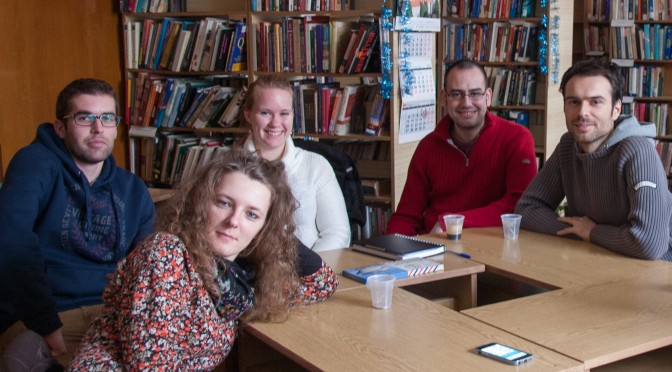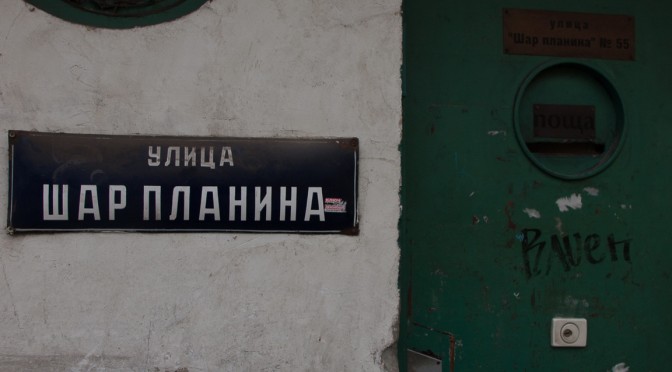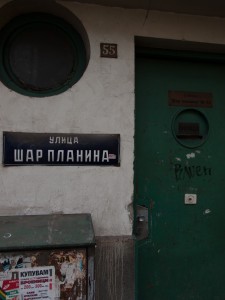 The Electric Kool-Aid Acid Test by Tom Wolfe
The Electric Kool-Aid Acid Test by Tom Wolfe
My rating: 2 of 5 stars
You ask me what I think. Think. Neurons flashing up, millions, billions, zeros, on an array of pixels my primitive mind is not fully equipped to understand. The bright lights! “Yes! Follow them”, and they did just that, his super-ergo, his ego, the animus, the shadow self and all of the other assorted invisible, conscious, subconscious, unconscious and extended entities, tied together by the zeitgeist of the universal… Now. Nobody was better fit to understand it but him -or is that them– in that room, with that assortment of pages and memories and experiences and images, in that city that they in the South – but it wasn’t just the South – had no idea about, but who does really? And the assortment of pages, which we borrowed from the city library in Sofia, that city known for the cold but living the heat, “great day today, record highs!“- it took some time, some bits of now, of one-ness and possibilities and pages and memories and experiences and all of that, to decode and understand. But how much of it stuck? Does it even matter? And it’s not like I haven’t dipped my toes in this stuff, mind you. Beginning to understand and creating the dots on the screen this 01010010010100010 111011101010101010 in vast, immense, unfathomable bzzzzzzzz, only harnessed by the computer, the ultimate being, the judge, the jury, the executioner, the Wikileaks activist, the troll and the Spyder – it’s a superbeing unleashed by the lowly beings, that’s it. The Computer -it has to be with a capital C now, don’t you see?- will take my decoded neural flashes and make them into this text that, if people watch carefully, will see that it’s not more than it is. Which part exactly? Hah! So many interesting questions. Tell me more about how much you want to learn about the world.
This was my subjective experience of reading The Electric Kool-Aid Acid Test and beginning to write a review for it. What? You didn’t get it? Tsk. First of all: I didn’t
ask you for your opinion, and much less did I write it to suit
your needs; what part of “self-expression” do you find so difficult to understand? Figures: you’re one of those
square types that can’t appreciate a description of an indescribable experience for what it is, aren’t you? For chrissakes, why do you have to push
meaning into everything? Look how much good your
meaning has done us!
OK, enough with this. Because I do value meaning, I’ll stop here. I hope, however, that this was enough for you to get the picture. You see, Tom Wolfe did something remarkable, though quite representative of his time (that’s 1968 we’re talking about here): he tried to document and tell a story without caring too much about whether the readers would understand it or whether it would make sense at all, but insisting on a specific style to prove a point. The magic of what really happened, which we’ll get to in a second, apparently gave him the impression that having his story mirror what its main actors must have experienced while actually living it, would make for a breath-taking read…
…no-no-no. Let’s put it this way. Suppose the people you wanted to document the life of, their life as seen through their eyes, were tripping on LSD for most of the duration. Bad idea, right? Well, let’s just say that this is the book that had to be written for people to learn why it’s not a good idea.
Actually, the story itself that The Electric Kool-Aid Acid Test sets out to tell is super-interesting: it’s the documentation of the events that made LSD hit the mainstream, the story of the Merry Pranksters, the absolutely bonkers mix of gang, pilgrims, troupe, nomad tribe and religion led by Ken Kesey and how they took over the US underground in the ’60s. Obnoxious and inspiring in equal measure -okay, maybe slightly more obnoxious- they travelled all over the US in that painted old school bus that turned magic and ended up becoming a symbol of their later activity, the Acid Test parties, underground events that in their own right founded a big part of what we understand today as the recreational drug, clubbing and hippie scenes.
Reading about Ken Kesey and the Merry Pranksters and the crazy things they did filled me with wonder and amazement: so that’s what happened; that’s what living in those times and following this ground-breaking movement must have felt like, being an acid-head cyberpunk 20 year before anyone had even thought of the word. They thought then, whenever they weren’t “zonked out” of their brains, that they would change the world, only they didn’t, and maybe you can understand why -and where things might have gone different- by reading this story.
It’s not Tom Wolfe’s “subjective” style that gives this effect, though. Reading something that felt like it was written while everyone involved was tripping did not make me have a clearer picture of what really took place. On the contrary: the segments of the book more akin to real journalism, the parts where Wolfe decided he could give us readers a break, were the most interesting by far for me to read. However, I can see what he was trying to do: using this kind of language he only wanted to convey the indescribable that is the altered state, the psychedelic experience. Back then it must have felt like a revolution to put it in this way, the culmination of a million different things guiding your hand and voicing the feelings and memories of an entire generation (it says so in the description of the book anyway: “They say if you remember the ’60s, you weren’t there.”) But now, one or two generations later, it all comes across as rather bad writing. He might as well have invented a new language to try to describe the inexplicable, the “you must live it!” factor. Maybe the new language would have been easier to read through, even.
This is a significant book documenting important and interesting events that distill the countercultural mythology, don’t get me wrong. If you’d like to get a feeling of the psychedelic indescribable by reading it, though, maybe it would be a better idea to watch a recently released cut of The Movie known as Magic Trip – the 16mm film Ken Kesey and the rest of the Merry Pranksters shot during their journeys with Further. I know I will.
Book borrowed from the American Corner of Sofia City Library
View all my reviews

















